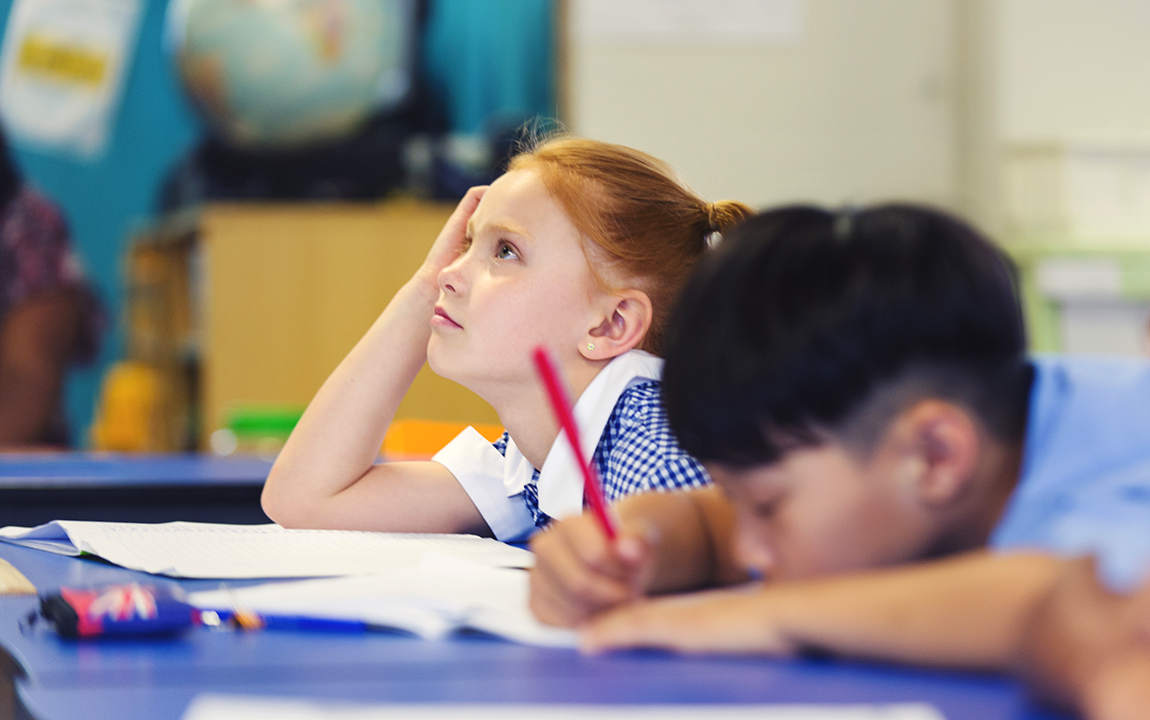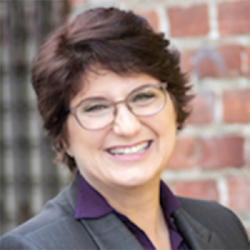
A student puts his head on the desk just as the rest of the class opens their Chromebooks. Another sits there, waiting for 1:1 prompting from the adult, even while the students around her have read the directions on the board and have begun the activity. Yet another student fills out the test randomly, his bubbles or clicks meaningless. These are just some of the indicators of learned helplessness. Students with learned helplessness don’t make an attempt to work because they are convinced any effort will end in failure.
This kind of phenomenon rears its head in our classrooms when we see students, many of whom have suffered trauma, depression, or anxiety, collapse at the first sign of challenge. Some students may have acquired learned helplessness by not experiencing success at school and giving up on their chances.
The key to combating learned helplessness is engagement, but in PBL engagement doesn’t always look like a smile. Sometimes it looks like a bead of sweat. So how do we combat the tendency of some students to give up without producing even a single drop of sweat?
Project Based Learning encourages students’ productive struggle, that sweet spot just shy of frustration that stretches a student’s abilities. When combined with intentional engagement and guidance, PBL can help students WANT to work through struggle.
How to Use PBL to Activate a Healthy Productive Struggle
The good news is that learned helplessness can be unlearned. But to teach it means we have to intentionally activate productive struggle. Just be prepared: combating learned helplessness happens over time. Maybe you won’t see the full benefits of your efforts in your one year with that student. However, much like learning how to collaborate or embed evidence in an argument, by the time that student graduates, we will all have contributed to helping that student grow.
So how can you use PBL to be a part of that continuum and actively teach productive struggle?
1. Model your own learning process. As teachers, we find ourselves pushed out of our own comfort zone when we have to adopt a new text or a new initiative comes down the line. Our professional development happens in staff rooms, on Twitter, or at home. Rarely, do we share our productive struggle alongside our students. But I would argue that this is where true learning happens for both groups.
Find ways to model working outside your own comfort zone and you will have modeled deeper learning. Tackle a new piece of equipment or program, but instead of learning it behind the scenes, bring the process into the classroom and be transparent in your own learning journey.
2. Provide scaffolds to help them through the struggle. If we want students to work through productive struggle, we have to provide resources that help meet them where they are.
- Provide sentence stems to help struggling students get their writing train on its track.
- Use programs that will help level reading selections for those who shut down when faced with a page of text, or use one that will read to them while they read along.
- Turn on captions when listening to speeches or provide transcriptions so that they can annotate and interact with words.
- Limit choices of where to conduct research so students aren’t shut down by the vast Google rabbit hole.
Teaching independence isn't abandoning students to figure out content without a guide. It means providing scaffolds so that their confidence begins to develop a muscle memory. Remember also that when you feel they are ready, scaffolds eventually should come down. Pay attention to indicators of when you can remove those structures.
3. Leverage what they CAN do. Coach students using asset-based teaching strategies rather than deficit-based teaching practices. Find out what that student can do and allow for more successful moments. A student who is always in productive struggle, after all, is exhausted all the time. Give them moments of ease and they just might rise up to meet a challenge more often.
- If a student can’t write a full constructed response, can they have a less stressful 1:1 meeting with you to prove what they know?
- At the end of each assessment, can you add a question asking what else the student knows that the assessment didn’t ask?
- Can the student bring in authentic examples of the topic from the world outside school?
Think about alternative ways students can feel they’ve achieved the goals before them, and prioritize where they need to put their struggle.
4. Build a Culture of Support. A pillar of PBL is to build a community of learners that encourages and cheers students on through any struggle. Peers become a net of additional resources while teachers ensure a place where it’s safe to take risks, fail, and get back up again. Yours shouldn’t be the only voice a struggling student hears guiding them. Spend time building this culture and you’ll see fewer moments of collapse.
- Throughout the year, use ice breakers to get students communicating with each other. Use attendance questions so you can learn more about each student than their grade indicates.
- Before a unit, co-create norms with students on how to work together so that more kids have buy-in to the process.
- During a unit, provide students with team logs to capture the work they have done, rather than focus on what they haven’t.
- During the feedback process of a unit, give students sentence stems that encourage honest praise as well as kind critique. While you’re at it, model how it is to receive feedback yourself and give students opportunities to reflect and tell you how it’s going. If they see you making changes with a smile, that might just help them do it too.
- At the end, celebrate what was accomplished!
We know that at the end of struggle, there is growth. But students don’t have that hindsight yet. To them, for many years, struggle feels just like that...a struggle. Using PBL, we can help students learn that they have resources and people around them to help work through struggle and grow.

